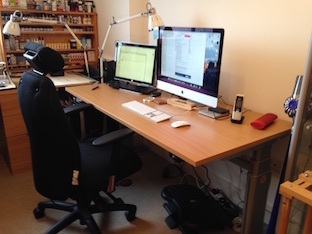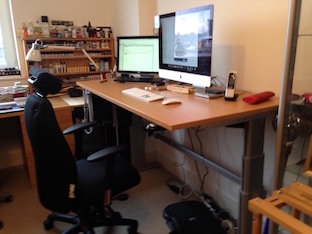I am bashing away at this but feeling that I missing too much as I go. As I mentioned before, my strategy is to crash through the course work and get myself plenty of headroom for the TMA. I am currently at the start of week 15 and have completed part 16 so I am about 2 weeks ahead. Tomorrow, I will start on question one of TMA 02 having submitted ICMA 44 some time ago.
I got 55.67 out of a possible 60 for ICMA44 which gives me another result in the low 90s. 92.78% to be precise. I felt that i could have got 100% if I had tried another go round but I can't see the point in doing that when all I need is 30% to pass the module. So far, I have averaged 85.6% for the ICMAs so I am quite pleased. With 72% for TMA01, I am satisfied that my strategy is working.
Now, to part 15. Wow, what a devil of a part. This part concentrates on extracting data from a MongoDB database and mapping the results. I am finding this incomprehensible. The code is complex and arcane in its presentation and use and there is zero explanation of what is going on. As an example, in 15.1 it shows you how to map accidents in the area of North Wales Police. It does this by giving you a code - 60 - which represents this police area. In the assignment bit, it asks you to map accidents in the Hampshire police area with no indication of the code for Hampshire. In the solution, it shows you how to get the code - but we have never seen this before so I am not sure quite how I was supposed to know how to do it. So it goes on...
Yet again, I decided to skim the solutions and to make sure I knew where to come back to when/if I need to. I have never had to tackle an OU course in this manner before and I hope not to have to again. I am very fortunate in have a long experience in coding object oriented software against SQL and NoSQL databases so, although I am not rigorously trained in the theory, my experience of the practice seems to be getting me through.
Now, to more interesting things. I have been working quite hard - outside of my allocated OU hours - on getting my new Riak database integrated into some of my fun code. Now that I am retired, I can work on my own projects rather than those for other people (well a lot of the time anyway as I still get paid consultancy). I have a project that, for convenience sake, was using CSV files as its data store. I am slowly converting that to use the Riak database I have running on Amazon AWS. I had most of the CRUD working but had a strange thing when trying to delete objects from buckets. I could delete a single object but when I tried to loop around the keys for the bucket, nothing was getting deleted. I ran the single code through Wireshark and compared it to the same call using Curl and couldn't see any difference. It took me hours to realise that I was switching the parameters to the single delete method when calling from the loop so the http call was badly formed. Did I feel stupid - yes, I did. Still it is sorted now and I can get on with the integration proper.
(Wireshark records all TCP/IP traffic down a network connection so you can see what is being sent. Curl is a Unix command line program that formats and sends HTTP calls.)
One last thing that I found - one of my classes has lots of entries and I firstly put them individually into a single bucket but I found that creating and saving - and reading and decoding the JSON was taking too long so I now put all of the individual items in a JSON array and save them in one go. Much quicker!


